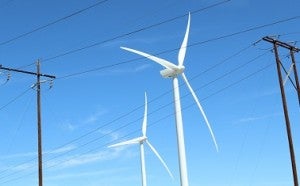The Most Carbon-Efficient Year Ever for America’s Power Industry?
 It’s been 60 years in the making and it’s finally here: America’s power generation fleet has changed so much since the 1950s, and especially over the last decade, that the amount of carbon we emit per megawatt-hour of electricity produced has dropped to its lowest point in recorded history.
It’s been 60 years in the making and it’s finally here: America’s power generation fleet has changed so much since the 1950s, and especially over the last decade, that the amount of carbon we emit per megawatt-hour of electricity produced has dropped to its lowest point in recorded history.
In fact, 2015 could be the cleanest ever for our power industry, according to a recent report by Bloomberg New Energy Finance. Two major developments have driven this change:
- Renewable energy projects are skyrocketing.
Based on confirmed contracts, renewable energy will hit a record 18.3 gigawatt of new build in 2015. Of that, 9.1 gigawatts will come from solar (an all-time high) and 8.9 gigawatt from wind (third-most ever).
By the end of 2014, renewables (not including hydro power) accounted for 7 percent of electricity generated in the United States. Solar and wind, alone, are expected to account for 60 percent of new capacity in 2015.
- The switch from coal to cleaner natural gas plants continues.
Today, natural gas makes up 30 percent of the total generation mix, up from about 12 percent around the turn of the century. At the point of combustion, gas burns with half the carbon emissions that coal emits (not taking into account fugitive emissions of methane). As gas generation replaces dirtier fuels such as coal, the emissions factor of the overall U.S. fleet is steadily reduced.
These trends have produced results. This year, utilities will produce 0.51 ton of carbon dioxide for each megawatt-hour of electricity produced. That compares with 0.66 ton in 1970 and 0.59 ton in 1950.
The trends are taking hold
The surge in renewable generation in the U.S. is in large part due to renewable portfolio standards that – along with technology improvements and lower production costs – have helped spur a decline in solar prices. Since 2009, the cost of solar panels has declined 89 percent and cost for wind installations by 48 percent, BNEF reports. Policies such as tax incentives have also helped push renewable deployment.
These changes are working in tandem with the transition from coal to gas.
Measures from the U.S. Environmental Protection Agency to curb harmful pollution, combined with on-the-ground advocacy and cheap natural gas prices have, for years, prompted utilities to invest in smaller and cleaner gas plants. It has resulted in coal decreasing from 50 percent of the fuel mix in 2001 to a projected 35 percent in 2015, BNEF data shows.
Projections suggest that these trends will continue and that the tons of CO2 we emit to produce one unit of electricity will continue to decline. Once the EPA’s Clean Power Plan is in place and utilities must reduce emissions from their power plants, the transition to a cleaner energy economy should accelerate, allowing us to reach lower emissions rates even earlier.
2015 being on track to be the cleanest year on record is cause for optimism, but let’s hold the champagne for when we’re closer to where we need to be.
In due time, such progress may become, well, business as usual. But only if supportive policies continue to be adopted and Americans remain willing to fight for them.
Photo source: Flickr/Tom Fassbender
This post originally appeared on our blog EDF Voices.











